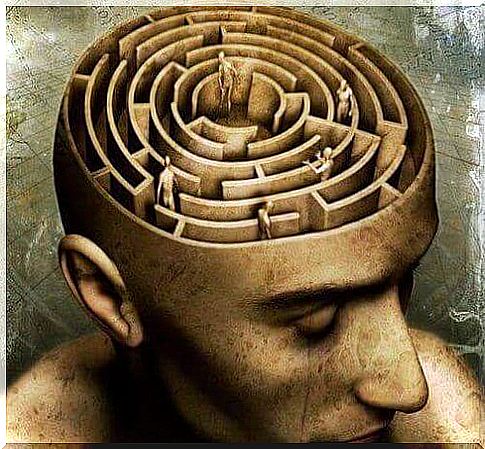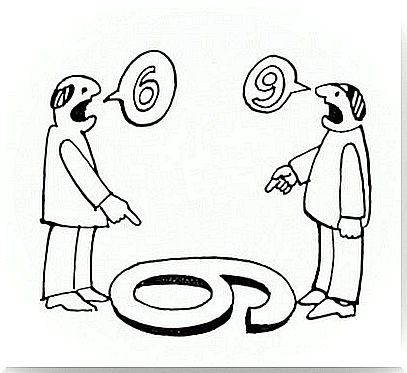Constructivism: How Do We Build Our Reality?

For a long time, philosophers and scientists have wondered how we perceive our reality and how we acquire knowledge. In this article, we consider one of the ways of thinking that answers these questions: constructivism. The theory of constructivism equips us with an interesting approach to the study of psychology.
Before embarking on constructivism, we should review its history and understand where it comes from. To keep it simple, we will attack the subject from two sides. First, we consider the acquisition of knowledge. Then we look at how we perceive our reality.
How do we acquire knowledge
Where do our ideas and mental representations come from? The classical theories that address these questions are divided into two directions. One is empiricism and the other the theory that it is innate.
Empiricism is based on the premise that all our knowledge comes from experience. Even the smallest and simplest ideas we get from the environment around us, which the brain later captures and learns.
The assumption of this theory is that knowledge is something that is completely outside us and is transferred to the brain. It can come from others and from reality itself, which the individual copies. Empiricism is a theory that is very much in line with common sense. It has inspired other psychological directions such as behaviorism.

The theory of knowledge is innate was created because empiricism seemed inadequate. One could accept that a good part of the knowledge was acquired by people from external sources. Yet we are still born with certain abilities, such as connecting with others using sophisticated language.
Thus , the theory that knowledge is innate is based on the fact that there is also knowledge that is not acquired through experience. Such knowledge – or programming – is absolutely necessary to organize our experiences (categories of space, time and numbers for example).
The problem we face with this theory is that it falls short of how this innate knowledge arises. Nor does it explain why certain types of knowledge arise at different times. Above all, it does not explain why there are individual differences. Constructivism wants to solve these problems, along with the problems that came with empiricism.
Constructivism begins with the principle that knowledge is the result of a continuous interaction between reality and the individual. The individual is like an intuitive researcher. He collects data about his surroundings and creates interpretations around this. These interpretations help us to create our own world and create the basis for how the individual perceives his environment.
How do we perceive our reality?
This is also one of the big questions, and a number of possible solutions have been put forward. The most intuitive explanation, and the first that emerged, was realism. This theory states that we believe we receive an exact copy of our reality. What we see, hear and touch is exactly what we perceive, and all other peoples perceive it equally.
Realism soon collapsed. Many philosophers understood that our senses do not perceive reality perfectly. Descartes and Humes even went so far as to say that it was actually possible that there was no reality behind our senses. Here is another possible solution: the senses give us an imprecise reflection of reality. We do not perceive reality directly, but we only see a shadow of reality.
Nevertheless, shortcomings also emerge with this latest explanation. For example, it does not explain why we perceive situations differently, even though we use the same senses. It seems that the shadow of reality changes depending on which individual perceives it. This is where constructivism tells us that our perception of the world is not just a reflection of reality, it is more complex than that.

The theory of constructivism tells us that our senses give us information about reality, but that it is too chaotic for our brain. In order to be able to process this information, the brain must structure it. To do this, the brain categorizes the unstructured information into concepts and interpretations. Here reality is inaccessible to us.
Constructivism and socio-constructivism
To put it briefly and concisely , we can understand constructivism as an epistemological starting point where we are active agents of our perception, and we do not get a literal copy of the world.
Through our perception of the world, we shape both our inner world and the outside of ourselves. So if we are all active agents who shape their own reality, then how is it possible that all people have a fairly similar view of the world?
We can find answers to this in the psychologist Vygotsky and his socio-constructivist theory based on culture. Although we all build our own world, we are all born into a society and a culture that influences us.
When we are born surrounded by a certain culture, this does not only guide our interpretations. It also gives us a variety of constructions to borrow from. One proof in favor of this theory is that our individual constructions of reality are more similar to reality constructions made by people from the same culture, than it is to those made by people from other cultures.

The conclusion after all this is that all ideas, theories and knowledge are social constructions. Our reality is foreign to us. Even physical laws are part of social constructions and have a shared conceptual framework. Therefore, science will no longer explain the events of reality, but the events of our common construction of reality.
These presumed truths have to some extent been a revolution in psychology and other fields. Thanks to socio-constructivism, many areas of psychology have completely changed paradigms and gained a broader perspective. One question remains : is constructivism the right answer, or do we have even more to learn?









